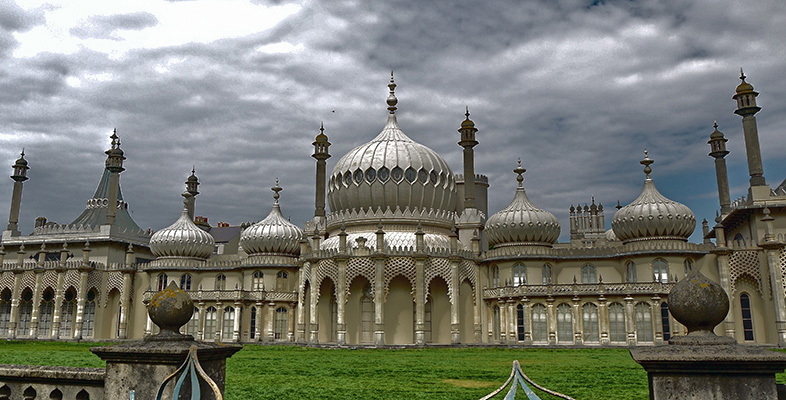Glossary
- Chinoiserie:
- the deployment of ‘Chinese’ motifs within interior decor, popular from the early eighteenth century onwards. The most widespread example of this is the so-called ‘willow pattern’ used on domestic china which persists to this day.
- Clerestory:
- an upper part of a wall carried on arcades, and pierced with windows to allow light to penetrate.
- Coffering:
- deep panels sunk into a domed ceiling.
- Cornice:
- a crowning moulding projecting horizontally at the junction of a wall and ceiling.
- Cove/Coving:
- a surface of concave form linking wall and ceiling. Cupola: a diminutive domed form, visible above a roof.
- Enfilade:
- a French term, signifying the alignment of all the doorways in a suite of rooms so as to create a vista when the doors are open, thus avoiding corridors. The word is also used to denote the alignment of mirrors in such a way as to create a similar set of vistas.
- Fan-vaulting:
- inverted half-cones or funnel shapes with concave sides. The style was originally designed to form a vaulted roof in late Perpendicular church architecture, but by the late eighteenth century it was used for decoration only.
- Fretwork:
- the practice of piercing thin sheets of wood with cut-out patterns. In the Royal Pavilion, much of this is actually executed in trompe l'oeil style painting and is ‘Chinese’ in its straight-sided shapes.
- Gothick:
- (spelled with a ‘k’ to distinguish it from true Gothic, a medieval style of church architecture, and from the Victorian Gothic Revival) an eighteenth-century English style based only vaguely on archaeologically correct Gothic, with a pronounced taste for the exotic, especially chinoiserie, and so connected with Rococo frivolity and, latterly, with the picturesque.
- Grotesque:
- derived from the ornamentation in ancient Roman grottoes discovered during the Renaissance, in the eighteenth century this term came to be applied to decorative motifs of all kinds of Roman origin, including those used in elegant, neoclassical interiors. In the Romantic era the term acquired darker meanings and was used by Victor Hugo to suggest strange and disturbing mixtures of the comic and the tragic, the satanic and the farcical. Generally, the ‘grotesque’ satisfied a Romantic thirst for intense sensory and emotional stimulation.
- Minaret:
- a tall slender tower (circular, rectangular or, as in the Brighton Pavilion, polygonal) associated with mosques.
- Mog(h)ul:
- a term used by contemporaries to refer to Indian Muslim culture.
- Parapet:
- a low wall at the edge of a roof, which may be ornamented, pierced with holes or left plain.
- Perpendicular:
- a term used to identify church architecture from the beginning of the fourteenth century. It is characterized by particularly elongated forms, e.g. spires.
- Reticulation:
- arranged to look like a net, with the same figure repeated all over the surface.
- Rotunda:
- a building or part of a building shaped like a cylinder both inside and outside, especially one covered with a dome.
- Spandrel:
- a triangular plane between two arches.
- Strawberry Hill Gothick:
- this term, derived from Horace Walpole's fantasy home at Strawberry Hill, signifies a violently exaggerated and delicate mock Gothick style.
- Taste:
- a key eighteenth-century term, on which whole books have been written. Broadly speaking, however, to possess a correct taste and the financial means of deploying and displaying it denoted high social status. This was usually, although not always, associated with landed or ‘old’ wealth rather than with ‘new’ wealth.
- Trompe l'oeil:
- from the French, meaning literally ‘to trick the eye’ – i.e. to trick it into seeing something that is not there. The term is used of a painting technique which deceives the eye into thinking that a two-dimensional image of something (for example, a tassel or a vase) is the thing itself.
